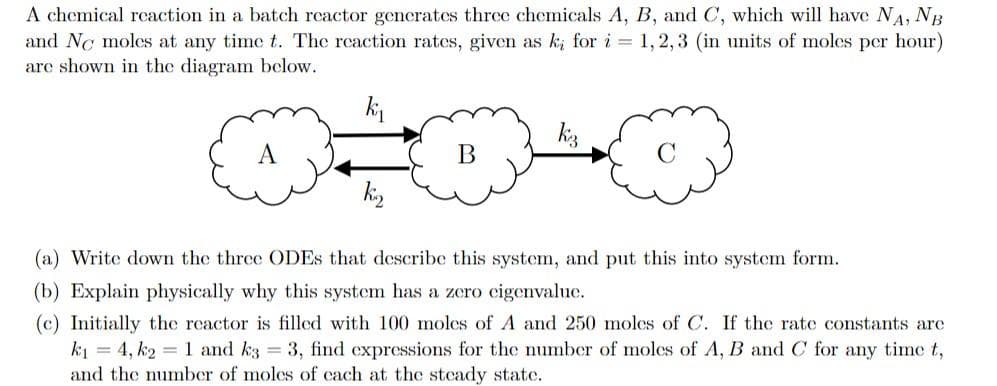A chemical rcaction in a batch reactor generates three chemicals A, B, and C, which will have NA, NB and Nc moles at any time t. The reaction rates, given as k; for i = 1, 2, 3 (in units of moles per hour) arc shown in the diagram bclow. kij kis kiz (a) Write down the three ODES that describe this system, and put this into system form. (b) Explain physically why this system has a zero cigenvalue. (c) Initially the reactor is filled with 100 moles of A and 250 moles of C. If the rate constants are ki = 4, k2 = 1 and k3 3, find expressions for the number of moles of A, B and C for any time t, and the number of moles of cach at the stcady state.
Catalysis and Enzymatic Reactions
Catalysis is the kind of chemical reaction in which the rate (speed) of a reaction is enhanced by the catalyst which is not consumed during the process of reaction and afterward it is removed when the catalyst is not used to make up the impurity in the product. The enzymatic reaction is the reaction that is catalyzed via enzymes.
Lock And Key Model
The lock-and-key model is used to describe the catalytic enzyme activity, based on the interaction between enzyme and substrate. This model considers the lock as an enzyme and the key as a substrate to explain this model. The concept of how a unique distinct key only can have the access to open a particular lock resembles how the specific substrate can only fit into the particular active site of the enzyme. This is significant in understanding the intermolecular interaction between proteins and plays a vital role in drug interaction.

Step by step
Solved in 2 steps with 2 images









